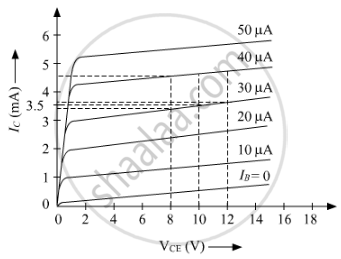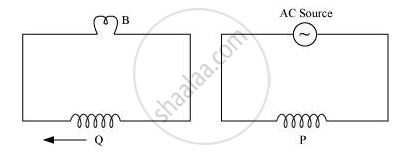Advertisements
Advertisements
प्रश्न
How does the sign of the phase angle `phi`, by which the supply voltage leads the current in an LCR series circuit, change as the supply frequency is gradually increased from very low to very high values.
उत्तर
The phase angle `phi` by which voltage leads the current in LCR series circuit where XL > XC.
`tan phi = (X_L - X_C)/R = (2pivL - 1/(2pivC))/R`
If v is small XC > XL so `[2πvL - 1/(2πvC)]` is negative, so tan `phi < 0`.
For v is large, XL > XC
So XL = XC is positive to `tan phi > 0`
For XL = XC i.e. at resonant frequency
XL – XC = 0 so `tan phi` = 0.
So phase angle in series LCR ac circuit will change from a negative to zero and then zero to positive value.
APPEARS IN
संबंधित प्रश्न
Output characteristics of an n-p-n transistor in CE configuration is shown in the figure.
Determine:
(i) dynamic output resistance
(ii) dc current gain and
(iii) ac current gain at an operating point VCE = 10 V, when IB = 30 μA.

A coil Q is connected to low voltage bulb B and placed near another coil P as shown in the figure. Give reasons to explain the following observations:
(a) The bulb ‘B’ lights
(b) Bulb gets dimmer if the coil Q is moved towards left.

To convert mechanical energy into electrical energy, one can use
(a) DC dynamo
(b) AC dynamo
(c) motor
(d) transformer
In an a.c. circuit, with phase voltage V and current I, the power dissipated is ______.
An A.C. source is connected to a resistive circuit. Which of the following is true?
